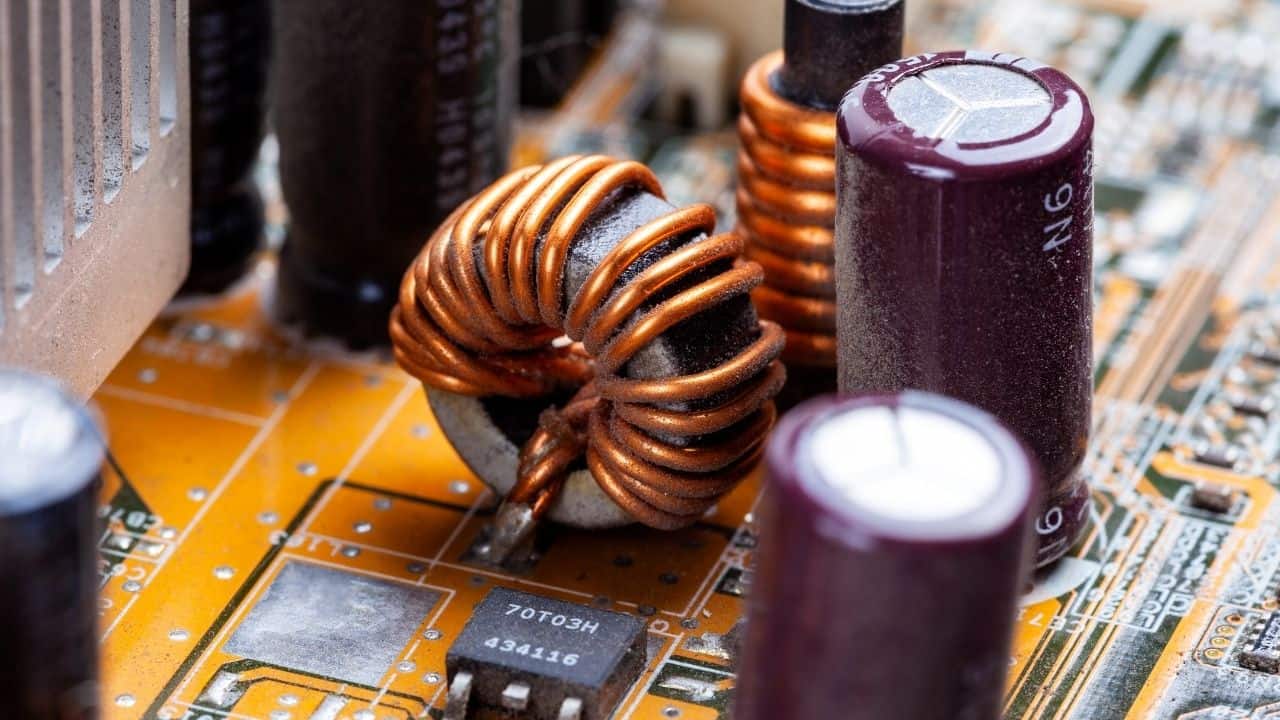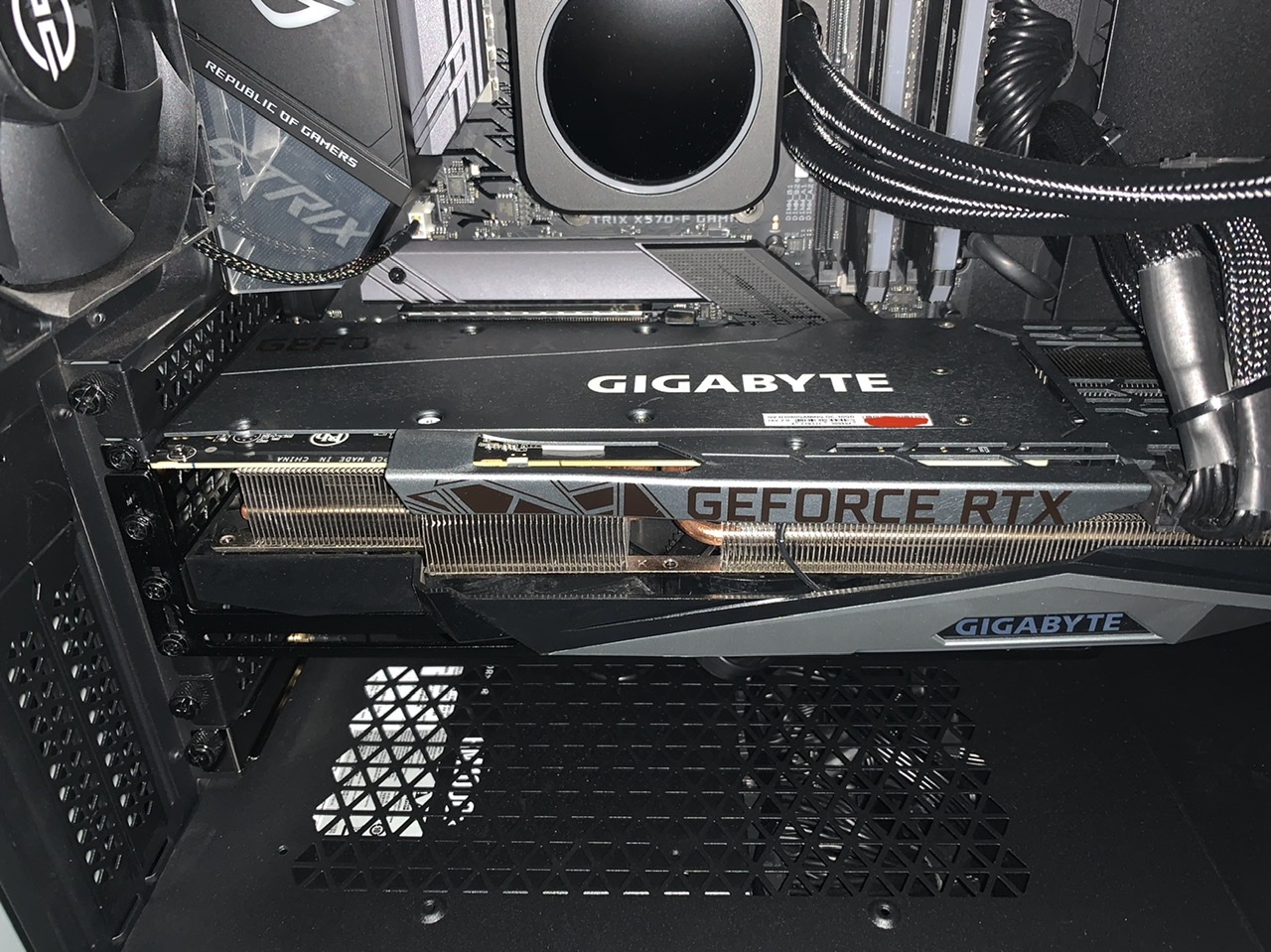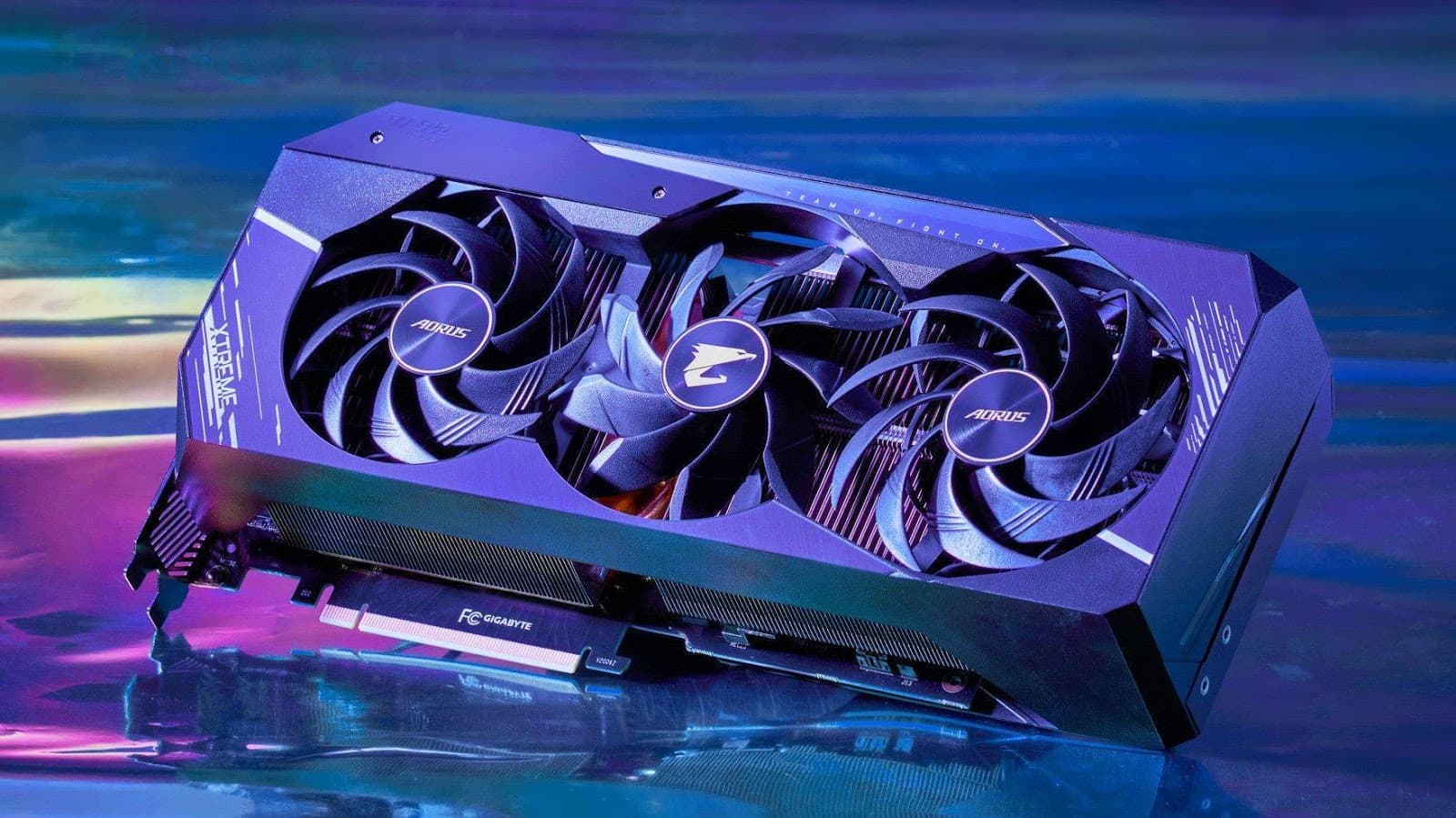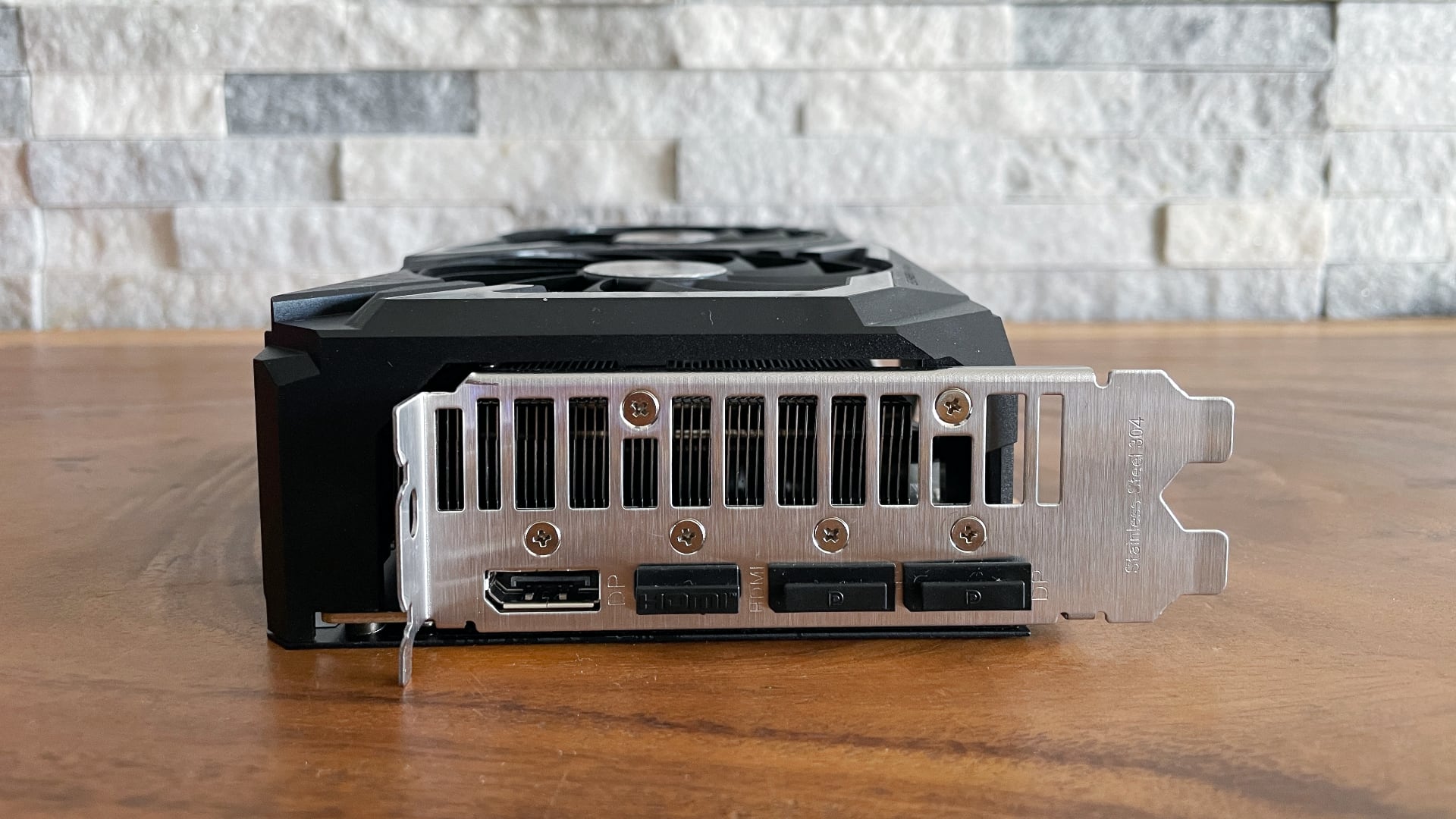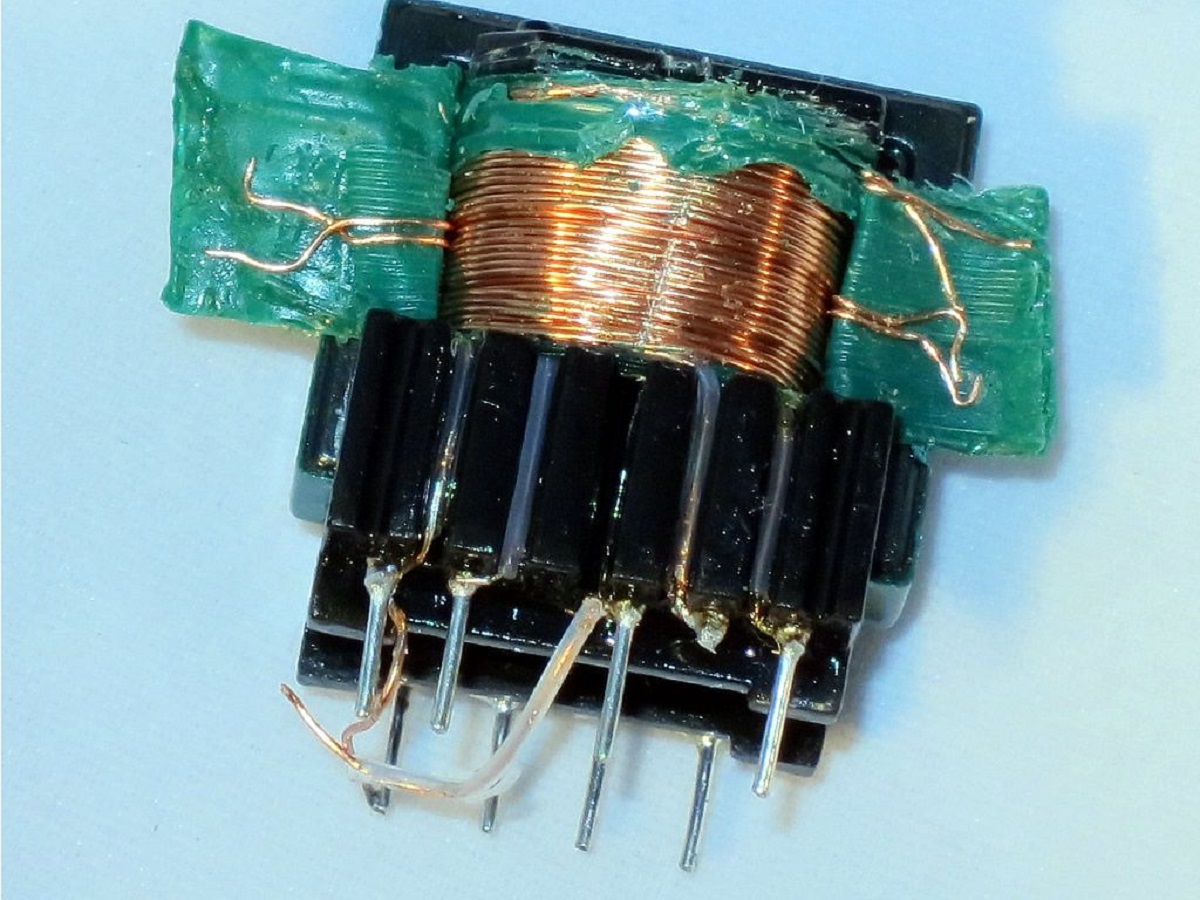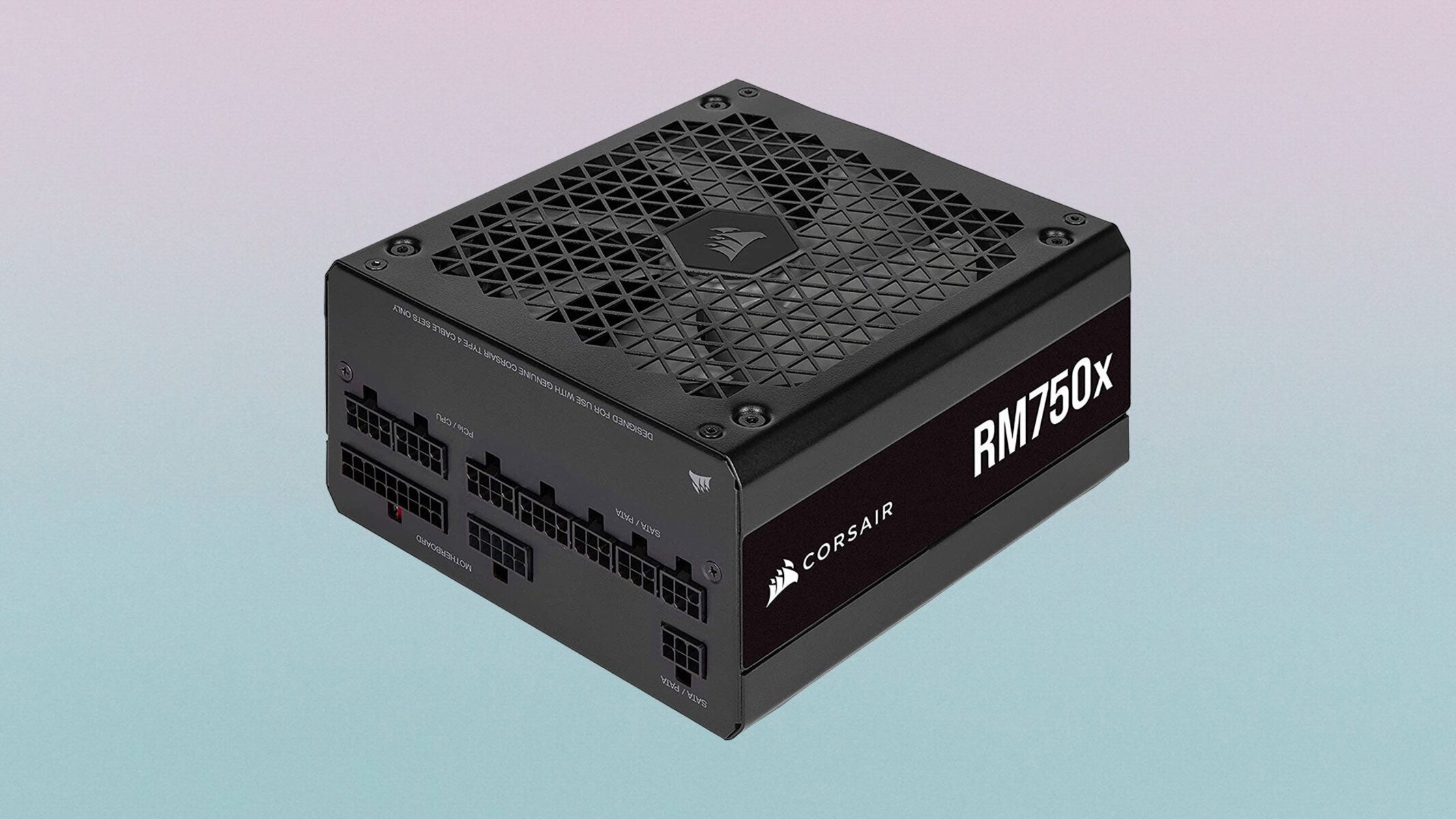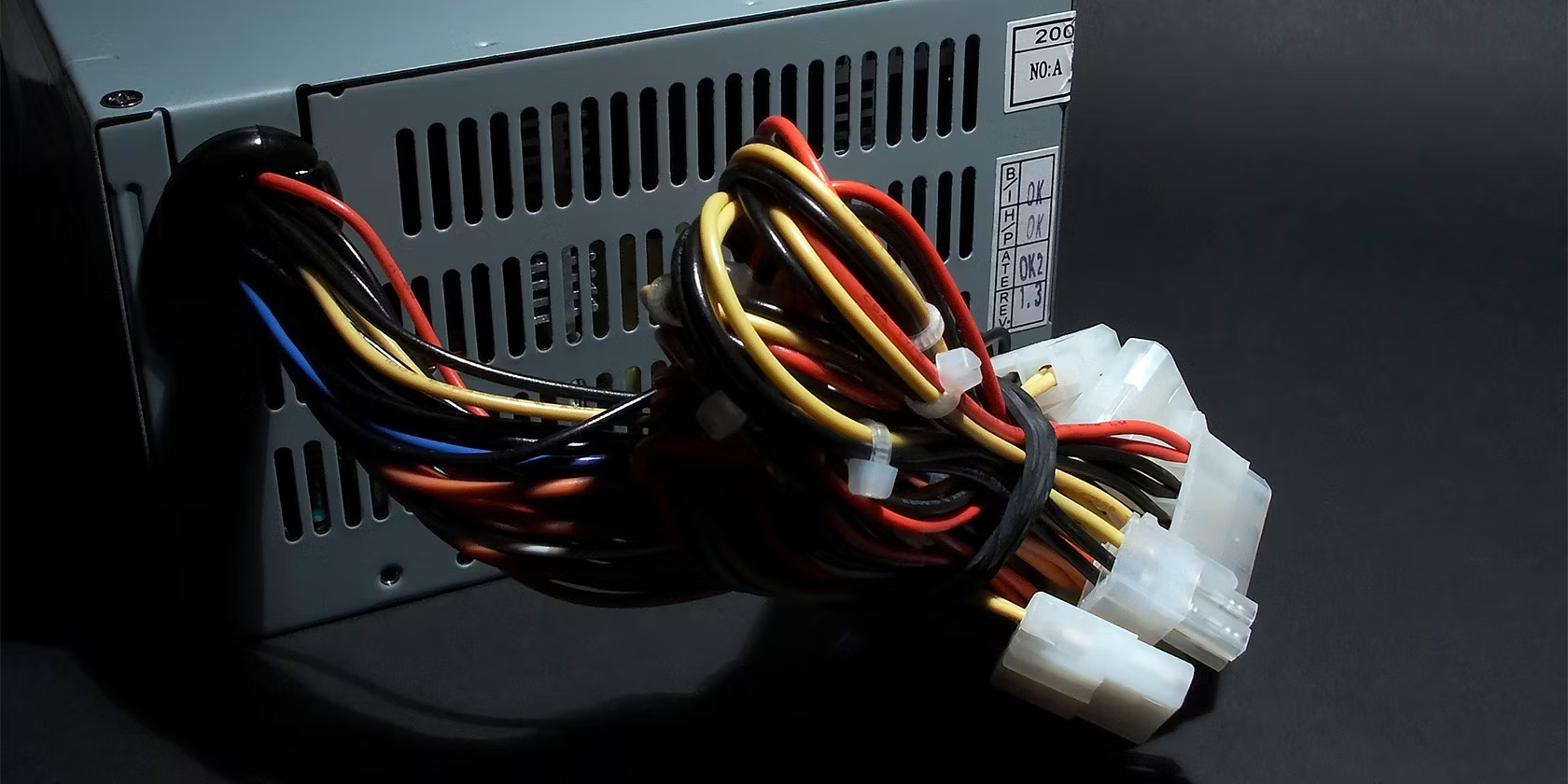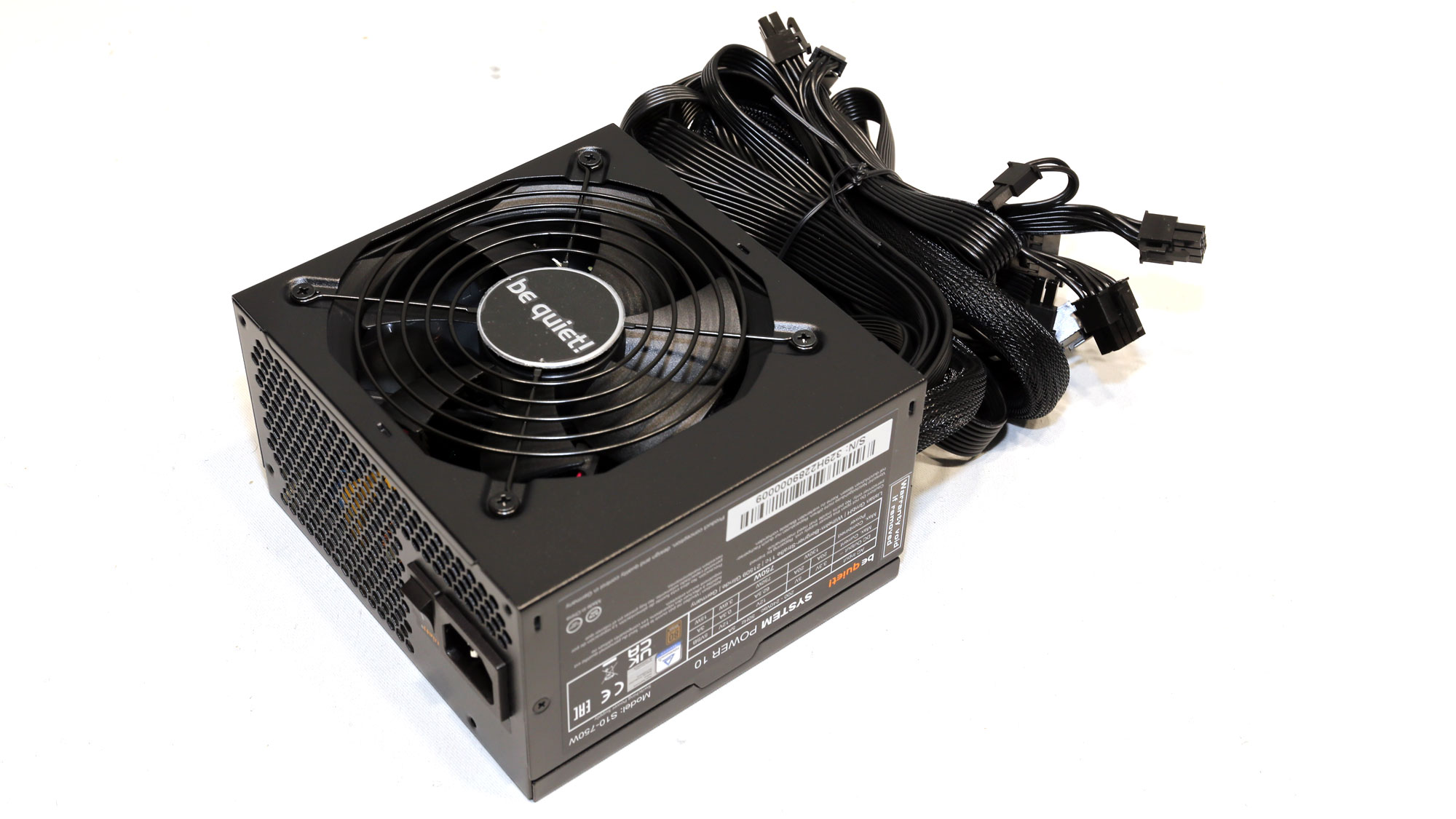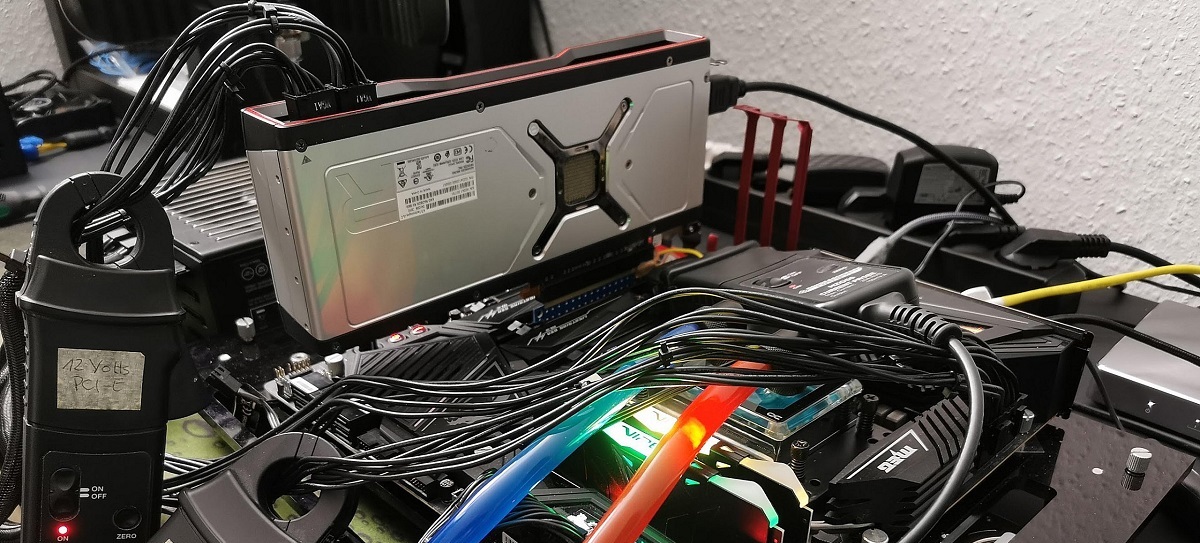Introduction
GPU coil whine is a common phenomenon that gamers and computer users may encounter when using high-performance graphics cards. It manifests as a high-pitched noise coming from the GPU, often resembling the sound of an electric coil vibrating. While it doesn’t directly affect the performance or reliability of the GPU, it can be quite annoying and distracting for users.
Coil whine occurs due to the electromagnetic vibrations in the inductors or voltage regulators of the graphics card. These vibrations can be caused by fluctuations in electrical currents passing through the components, especially during demanding tasks like gaming or rendering. It’s important to note that coil whine is not exclusive to a particular graphics card manufacturer or model and can affect both budget-friendly and high-end GPUs.
If you’re experiencing coil whine, there are several steps you can take to minimize or even eliminate the noise. Understanding the causes and potential solutions can help you enjoy a quieter and more immersive gaming or computing experience.
What Is GPU Coil Whine?
GPU coil whine is a phenomenon in which the graphics card produces a high-pitched noise, often described as a whining or buzzing sound. This noise is caused by the vibration of electromagnetic components on the graphics card, such as inductors and voltage regulators. When an electrical current passes through these components, it can generate vibrations that result in audible noise.
The intensity and frequency of the coil whine can vary depending on factors such as the workload on the GPU, power delivery, and the design and quality of the components. The noise is most noticeable during situations that put a heavy load on the GPU, such as when running graphics-intensive applications, playing demanding games, or during high frame rates in certain scenes.
It’s important to note that coil whine, while bothersome, does not indicate a defect or malfunction in the graphics card. It is simply a byproduct of the electrical currents and vibrations within the GPU’s circuitry. However, the extent of coil whine can vary greatly between individual graphics cards, even within the same model or brand.
While coil whine is generally harmless and doesn’t directly impact the performance or lifespan of the graphics card, it can be an irritating distraction for users, especially during quiet or low-load moments when the noise becomes more noticeable. Some people may be more sensitive to the sound than others.
Fortunately, there are steps you can take to minimize or reduce GPU coil whine, allowing for a more pleasant and quieter computing experience. By understanding the causes and implementing the appropriate solutions, you can alleviate or even eliminate the annoyance of coil whine and enjoy your GPU’s full potential without the distracting noise.
Causes of GPU Coil Whine
GPU coil whine can be attributed to a few different factors. Understanding these causes can help you identify the source of the noise and take the necessary steps to mitigate it.
1. Electrical Current Fluctuations: One of the primary causes of coil whine is the fluctuation in electrical currents passing through the GPU’s components, particularly inductors and voltage regulators. High-performance graphics cards often draw varying amounts of power depending on the workload, which can result in rapid changes in the electrical currents. These fluctuations can lead to vibrations in the components and subsequently produce the whining noise.
2. GPU Load and Frame rates: Coil whine tends to be more prevalent during intense GPU usage, such as when running graphically demanding games or applications. Higher GPU loads and frame rates can increase the power draw and subsequently amplify the electrical current fluctuations, exacerbating the coil whine. It’s worth noting that coil whine may be less noticeable during lower GPU loads or idle states.
3. Design and Quality of Components: The design and quality of the GPU’s components can also contribute to the occurrence and intensity of coil whine. Lower-quality components, such as low-grade inductors or voltage regulators, may be more susceptible to vibrating at specific frequencies, resulting in more noticeable coil whine. Additionally, circuit layout and manufacturing variances can influence the likelihood and severity of coil whine.
4. Power Supply Unit (PSU) Compatibility: Coil whine can also be caused by incompatibility between the power supply unit (PSU) and the graphics card. Some PSUs may generate higher levels of electrical noise or have inadequate power delivery, which can contribute to coil whine. It is recommended to ensure that your PSU meets the power requirements of your GPU and consider investing in a high-quality PSU if coil whine persists.
By understanding these causes, you can better diagnose the source of the coil whine and implement the appropriate solutions to minimize or eliminate it. Each GPU may exhibit different levels of coil whine due to variations in design, manufacturing, and usage conditions. However, there are several steps you can take to reduce or alleviate the annoyance of GPU coil whine, which we will explore in the following sections.
How to Determine if Your GPU Has Coil Whine
Coil whine can sometimes be difficult to identify, especially if you are unsure whether the noise is coming from your GPU. Here are some steps to help you determine if your GPU has coil whine:
1. Listen for the Noise: During heavy GPU usage, such as gaming or running high-performance applications, pay attention to any high-pitched whining or buzzing sounds coming from your computer. Coil whine is typically a distinctive sound and can often be heard over other system noises.
2. Identify the Source: To confirm that the noise is indeed coming from your GPU, you can try opening your computer case and listen closely to pinpoint the source of the sound. Be cautious not to touch any components while the system is powered on.
3. Observe GPU Load and Frame Rates: Coil whine tends to become more noticeable at higher GPU loads and frame rates. If you notice the noise is more prominent during intense gaming sessions or GPU-intensive tasks, it is likely that your GPU is experiencing coil whine.
4. Compare with Silent or Idle States: Coil whine may be less noticeable or completely absent during periods of lower GPU load or idle states. Listening for changes in the noise level between idle and heavy usage can help confirm if the noise is indeed coil whine.
5. Check for Consistency: If the high-pitched noise consistently occurs when your GPU is under load and stops when idle, it is more likely to be coil whine rather than another hardware issue.
It’s important to note that not all GPUs will exhibit coil whine, and the intensity of the noise can vary between individual graphics cards. Additionally, coil whine does not indicate any defect or malfunction in the GPU; it is simply a characteristic of the electrical currents and vibrations within the card’s components.
If you determine that your GPU has coil whine and it is causing significant discomfort or distraction, there are several steps you can take to reduce or eliminate the noise. We will explore these solutions in the following sections.
Tips to Reduce GPU Coil Whine
If you’re experiencing coil whine with your GPU and find it to be bothersome or distracting, there are several steps you can take to minimize or reduce the noise. While it may not be possible to completely eliminate coil whine in some cases, these tips can significantly mitigate its effects:
1. Update Graphics Card Drivers: Ensure that you have the latest drivers installed for your graphics card. Sometimes, driver updates can include optimizations that reduce coil whine or improve power efficiency.
2. Adjust Power Settings: Modify the power settings of your GPU through the driver software or system settings. By limiting power usage or using power-saving modes, you may be able to reduce the intensity of coil whine.
3. Clean and Dust Your GPU: Over time, dust and debris can accumulate on your GPU, which can restrict airflow and potentially contribute to coil whine. Regularly clean your GPU using compressed air or an anti-static brush to remove any buildup.
4. Ensure Proper Cooling: Ensure that your GPU is adequately cooled to prevent overheating. Excessive heat can increase electrical noise and potentially worsen coil whine. Make sure you have proper case airflow, clean fans, and consider using aftermarket cooling solutions if needed.
5. Check PSU Compatibility and Capacity: Confirm that your power supply unit (PSU) meets the recommended wattage and compatibility requirements of your GPU. Insufficient or incompatible power supply can accentuate coil whine. Consider upgrading to a high-quality PSU if necessary.
6. Adjust Fan Speeds: Adjust the fan speeds of your GPU using the graphics card software or third-party utilities. Increasing fan speeds can help cool the components more effectively and potentially reduce coil whine.
7. Replace or Modify GPU Cooler: In some cases, the GPU cooler may contribute to coil whine. Consider replacing the stock cooler with an aftermarket cooler or installing additional cooling solutions like liquid cooling to alleviate coil whine.
8. Use a Quality Power Supply: Invest in a reputable and high-quality power supply that provides stable power delivery. A well-built PSU can help reduce electrical noise and potential coil whine.
9. Use Noise Dampening Materials: Consider using noise dampening materials within your computer case to reduce vibrations and noise. Foam or rubber padding can help absorb vibrations and minimize the impact of coil whine.
10. Contact Manufacturer for Support: If coil whine persists and proves to be an ongoing issue, it’s advisable to contact the GPU manufacturer for assistance. They may offer additional recommendations or provide support options to address the problem.
By implementing these tips, you can significantly reduce the impact of coil whine and enjoy a quieter and more enjoyable computing experience with your GPU. Remember that the effectiveness of these solutions may vary depending on your specific hardware configuration and the severity of coil whine.
Update Graphics Card Drivers
Updating your graphics card drivers is an essential step in minimizing GPU coil whine. Graphics card manufacturers regularly release driver updates that include bug fixes, optimizations, and power management improvements. These updates can help reduce coil whine and enhance the overall performance and stability of your GPU.
Here’s how you can update your graphics card drivers:
1. Identify your graphics card: Determine the make and model of your graphics card. This information can be found in the Display settings of your operating system or through third-party hardware monitoring tools.
2. Visit the manufacturer’s website: Go to the official website of your graphics card manufacturer, such as NVIDIA or AMD. Locate the Support or Drivers section of the website.
3. Download the latest drivers: Look for the latest driver release that is compatible with your specific graphics card model and operating system. Download the appropriate driver package.
4. Install the drivers: Once the driver package is downloaded, run the installer and follow the on-screen instructions to install the latest drivers. During the installation process, make sure to select the “Clean Install” option if available. This will remove any previous driver remnants and ensure a fresh installation.
5. Reboot your system: After the driver installation is complete, restart your computer to apply the changes and ensure that the new drivers are properly integrated into the system.
Updating your graphics card drivers can bring various benefits, including improved power management algorithms that can help minimize voltage fluctuations and thereby reduce coil whine. Additionally, driver updates may include optimizations specifically aimed at reducing noise or vibrations caused by coil whine.
It’s essential to keep your drivers up to date, as newer versions may provide better control over your GPU’s power delivery, potentially mitigating the effects of coil whine. Regularly checking for driver updates and installing them can significantly improve your overall GPU performance and reduce coil whine noise.
Adjust Power Settings
Adjusting the power settings of your GPU can be an effective way to reduce coil whine. By modifying the power delivery and optimizing power management settings, you can potentially minimize voltage fluctuations and subsequently reduce the intensity of the noise. Here are some steps you can take to adjust the power settings:
1. Open Graphics Card Control Panel: Launch the control panel for your graphics card, such as NVIDIA Control Panel or AMD Radeon Settings. You can usually access these settings by right-clicking on your desktop and selecting the appropriate option.
2. Find Power Management Settings: Navigate to the Power Management or Power Options section within the control panel. The location of these settings may vary depending on the graphics card manufacturer and driver version.
3. Modify Power Limit: Look for options that allow you to adjust the power limit or power target of your GPU. Decreasing the power limit can help reduce power draw and subsequently minimize voltage fluctuations that contribute to coil whine. Note that reducing the power limit may slightly impact the performance of your GPU.
4. Enable Power-Saving Features: Check for options to enable power-saving features, such as NVIDIA’s “Optimal Power” or AMD’s “Power Efficiency” mode. These features optimize power management and help reduce power consumption, potentially reducing the occurrence of coil whine.
5. Save and Apply Settings: Once you have adjusted the power settings to your desired configuration, save the changes and apply them. Some settings may require a system restart to take effect.
By adjusting the power settings of your GPU, you have more control over its power consumption and delivery. This can help stabilize the voltage and minimize fluctuations, which are often the primary culprits behind coil whine. Experiment with different power settings to find the balance between power efficiency and performance that suits your needs.
It’s important to note that while adjusting power settings can help mitigate coil whine, excessively reducing the power limit may come at the expense of overall GPU performance. Therefore, it’s recommended to find a balance that minimizes coil whine without severely impacting your desired performance levels.
Clean and Dust Your GPU
Regularly cleaning and removing dust from your GPU can help in reducing coil whine. Dust accumulation on the graphics card can restrict airflow and lead to increased temperatures, which can exacerbate coil whine. By keeping your GPU clean, you can improve airflow and maintain optimal operating temperatures. Here’s how you can clean your GPU:
1. Power off your computer: Before cleaning your GPU, make sure to power off your computer and unplug it from the power source. This will ensure your safety during the cleaning process.
2. Open your computer case: Remove the side panel of your computer case to access the internal components. Take necessary precautions to ground yourself to prevent static electricity discharge.
3. Locate the GPU: Identify your graphics card within the computer case. It is usually positioned in the PCI Express slot and connected to the display ports on the back of the case.
4. Use compressed air: Use a can of compressed air to blow away the dust and debris from the GPU. Pay particular attention to the heatsink and fan areas, as these tend to accumulate the most dust. Hold the can upright and use short bursts of air to prevent liquid residue from being released.
5. Clean the fan: If the fan on your GPU is accessible, use a lint-free cloth or a soft brush to carefully wipe away any dust buildup. Be gentle to avoid damaging the fan blades or other components.
6. Clean the case: While you have your computer case open, take the opportunity to clean the surrounding areas, such as intake and exhaust vents. Remove any dust or obstructions that may impede proper airflow.
7. Close the case: Once you have finished cleaning the GPU and the surrounding areas, securely fasten the side panel of your computer case.
Regularly cleaning your GPU can help prevent dust buildup, minimize heat accumulation, and enhance overall airflow. By maintaining optimal temperatures, you can reduce the likelihood of voltage fluctuations that contribute to coil whine. Aim to clean your GPU every few months or as needed, depending on your environment and the level of dust accumulation.
Remember, it’s important to handle your GPU and computer components with care, avoiding excessive force or contact. If you are unsure about the cleaning process, consult the manufacturer’s guidelines or seek assistance from a professional.
Ensure Proper Cooling
Proper cooling is crucial in minimizing GPU coil whine. Excessive heat buildup can increase electrical noise and vibrations within the components, leading to more pronounced coil whine. By ensuring proper cooling, you can maintain optimal operating temperatures and reduce the likelihood of voltage fluctuations. Here are some steps to ensure proper cooling for your GPU:
1. Check GPU Temperatures: Monitor the temperatures of your GPU during gaming or demanding tasks using software tools or hardware monitoring devices. High temperatures can contribute to coil whine. Ideally, try to keep your GPU temperatures below the manufacturer’s specified maximum limit.
2. Clean Dust and Obstructions: Dust and debris can accumulate on the GPU heatsink, fan, and other cooling components, hindering proper airflow. Regularly clean your GPU, as discussed in the previous section, to prevent dust buildup and maintain efficient cooling.
3. Ventilation and Case Fans: Ensure that your computer case has adequate ventilation and airflow. Proper case fans help in exhausting the hot air generated by the GPU and bringing in fresh air. Consider installing additional case fans if needed to improve overall airflow within the case.
4. GPU Fan Speeds: Adjust the fan speeds of your GPU to maintain optimal cooling. Higher fan speeds can help in dissipating heat more effectively, but it may also result in increased noise levels. Finding the right balance between cooling performance and noise levels is key.
5. Overclocking Considerations: If you have overclocked your GPU, be mindful of the potential increase in heat generation. Overclocking can significantly impact temperatures and increase the likelihood of coil whine. Ensure that your cooling setup is capable of handling the additional heat generated by overclocking.
6. Consider Aftermarket Cooling Solutions: If you’re experiencing persistent coil whine and have exhausted other options, consider investing in aftermarket cooling solutions. Upgrading to a high-quality GPU cooler or installing liquid cooling can provide more efficient heat dissipation, leading to reduced temperatures and potentially minimized coil whine.
Proper cooling is integral to maintaining a healthy and stable GPU. By effectively managing temperatures and optimizing airflow within your computer case, you can reduce the occurrence and intensity of GPU coil whine. Regular maintenance, such as cleaning and monitoring temperatures, will help ensure that your GPU operates at optimal levels while minimizing noise and other potential issues.
Check PSU Compatibility and Capacity
Checking the compatibility and capacity of your power supply unit (PSU) is essential in addressing GPU coil whine. Inadequate power delivery or an incompatible PSU can cause voltage fluctuations that contribute to increased coil whine. By ensuring that your PSU meets the requirements of your GPU, you can minimize the chances of experiencing coil whine. Here’s what you need to do:
1. Determine GPU Power Requirements: Identify the power requirements of your graphics card, which can usually be found on the manufacturer’s website or in the GPU’s user manual. Take note of the recommended wattage and any specific power connector requirements.
2. Check PSU Compatibility: Ensure that your PSU is compatible with your GPU. Verify that your PSU has the necessary power connectors and meets the required specifications, such as PCI Express compatibility. Consult the PSU’s specifications to confirm compatibility.
3. Assess PSU Capacity: Calculate the power consumption of your entire system, including the GPU, CPU, storage drives, and other components. Compare this total power consumption to the capacity of your PSU. It’s generally recommended to have a power supply that provides some headroom above the total system power consumption.
4. Upgrade PSU if Necessary: If your current PSU does not meet the recommended wattage or lacks the necessary connectors for your GPU, consider upgrading to a higher-capacity and quality power supply. A well-built PSU with sufficient wattage can provide stable power delivery, reducing the chances of voltage fluctuations that contribute to coil whine.
5. Verify Power Cables: Ensure that the power cables connecting your GPU to the PSU are secure and plugged in correctly. Loose or faulty connections can cause power delivery issues, leading to increased coil whine. Make sure to double-check the connections and reseat the cables, if necessary.
6. Consider Power Conditioners or Uninterruptible Power Supplies (UPS): If you suspect that irregularities in your power supply may be contributing to coil whine, you might benefit from using a power conditioner or a UPS. These devices can help stabilize power delivery and protect your components from voltage fluctuations or power surges.
By checking the compatibility and capacity of your PSU, you can ensure proper power delivery to your GPU, reducing the likelihood of coil whine. It’s essential to invest in a high-quality PSU that meets the power requirements of your system to maintain stable and reliable performance.
Adjust Fan Speeds
Adjusting the fan speeds of your GPU can help in reducing coil whine by improving the cooling performance of the graphics card. By fine-tuning the fan speeds, you can optimize the airflow and temperature management, which can subsequently minimize the occurrence and intensity of coil whine. Here’s how you can adjust the fan speeds:
1. Use Manufacturer Software: Most graphics card manufacturers provide dedicated software to control and customize the fan speeds. Install the appropriate software for your GPU, such as MSI Afterburner, ASUS GPU Tweak, or EVGA Precision X, and open it to access the fan control settings.
2. Manual Fan Control: Set the fan speed to a manual setting rather than relying on automatic control. This allows you to have more control over the fan speeds and achieve the optimal balance between cooling performance and noise levels.
3. Fan Curve Optimization: Adjust the fan curve to specify the fan speed at different GPU temperatures. A steeper curve will result in higher fan speeds at lower temperatures, providing better cooling but potentially increasing noise levels. Experiment with different fan curves to find the sweet spot that balances cooling and noise reduction.
4. Find a Balance: While increasing fan speeds can improve cooling and potentially reduce coil whine, it’s important to consider the noise impact. Higher fan speeds can increase noise levels, especially if the fans are already running at high RPM. Find a fan speed that provides sufficient cooling while keeping the noise at an acceptable level for your needs.
5. Monitor Temperatures: Keep an eye on your GPU temperatures while adjusting fan speeds. Use software or hardware monitoring tools to ensure that the GPU temperatures remain within safe limits during heavy usage. Avoid excessively high temperatures, as they can contribute to increased coil whine.
6. Test and Fine-tune: Once you have adjusted the fan speeds, test your GPU under heavy loads, such as gaming or running demanding applications. Monitor the temperatures and listen for any changes in coil whine. Fine-tune the fan speeds if needed to achieve the desired cooling performance and noise reduction.
By adjusting the fan speeds, you can effectively manage the cooling performance of your GPU and minimize coil whine. Finding the right balance between cooling efficiency and noise levels is key to achieving optimal results.
Note that different GPUs and cooling solutions may have varying fan control options and capabilities, so the specific steps and features may differ slightly. Consult the documentation or support resources provided by your GPU manufacturer for more precise instructions on adjusting fan speeds.
Replace or Modify GPU Cooler
If you are experiencing persistent and significant coil whine, replacing or modifying the GPU cooler can be an option worth considering. Upgrading the cooler can help improve heat dissipation and reduce the chances of voltage fluctuations, which can contribute to coil whine. Here are some steps you can take:
1. Determine Compatibility: Ensure that the aftermarket cooler you choose is compatible with your specific GPU model. Check the cooler specifications and compatibility guides provided by the manufacturer to verify compatibility.
2. Research Aftermarket Coolers: Look for reputable aftermarket cooling solutions that offer improved heat dissipation and noise reduction. Examples include air coolers with larger heatsinks or liquid cooling solutions capable of efficiently cooling the GPU.
3. Remove Stock Cooler: Carefully remove the existing cooler from your GPU following the manufacturer’s instructions. This typically involves detaching screws or clips that secure the cooler to the GPU. Be cautious when handling sensitive components.
4. Clean and Apply Thermal Paste: Before installing the new cooler, clean off any old thermal paste from the GPU’s surface using isopropyl alcohol. Apply a fresh layer of high-quality thermal paste in accordance with the manufacturer’s instructions. This ensures proper heat transfer between the GPU and the new cooler.
5. Install New Cooler: Attach the new cooler to the GPU, following the instructions provided by the aftermarket cooler manufacturer. Make sure all screws or clips are securely fastened but avoid overtightening to prevent damage to the GPU or cooler.
6. Verify Fit and Clearance: Confirm that the new cooler fits properly within your computer case and doesn’t interfere with other components. Ensure that there is adequate clearance for airflow and that the cooler is securely attached without any loose parts.
7. Test and Monitor: Power on your system and monitor the GPU temperatures and noise levels after installing the new cooler. Check for any improvements in cooling performance and reduction in coil whine. Make any necessary adjustments to fan speeds or other settings to achieve the desired results.
Replacing or modifying the GPU cooler requires technical knowledge and precautions. If you are unsure about this process, it is advisable to seek assistance from a professional or consult the manufacturer’s documentation and support resources.
By upgrading the GPU cooler, you can potentially improve heat dissipation, reduce temperatures, and minimize coil whine. However, it’s important to consider the cost, compatibility, and potential warranty implications before making any modifications to your GPU.
Use a Quality Power Supply
Using a high-quality power supply unit (PSU) is crucial in minimizing GPU coil whine. A well-built PSU delivers stable and clean power to your components, reducing the likelihood of voltage fluctuations that can contribute to coil whine. Here are some considerations when selecting a quality power supply:
1. Wattage and Efficiency: Ensure that the PSU you choose has an adequate wattage rating to meet the power requirements of your entire system, including the GPU. An overtaxed PSU may struggle to deliver consistent power, leading to voltage fluctuations and potential coil whine. Opt for a PSU that offers high efficiency, such as 80 Plus certified units, to minimize electrical noise and maximize power delivery.
2. Brand Reputation: Stick to reputable PSU brands known for their quality and reliability. Brands like Corsair, EVGA, Seasonic, and Thermaltake have a solid track record in producing reliable power supplies.
3. Modular Cabling: Consider a modular PSU that allows you to detach unnecessary cables. This helps with cable management and promotes better airflow within your case, improving overall cooling performance and potentially reducing coil whine caused by overheating.
4. Voltage Regulation and Ripple Suppression: Look for PSUs with good voltage regulation and ripple suppression. These features help maintain stable power delivery by minimizing fluctuations and electrical noise, which are commonly associated with coil whine.
5. Power Supply Connectors: Verify that the PSU has the necessary connectors to support your GPU and other components. Check for compatibility with the PCI Express power connectors required by your specific GPU model.
6. Warranty and Customer Support: Consider the warranty and customer support provided by the PSU manufacturer. A longer warranty period indicates confidence in the product’s reliability, and responsive customer support can be valuable in case of any issues or concerns.
Investing in a high-quality PSU not only helps minimize coil whine but also ensures the stability and longevity of your entire system. A reliable power supply delivers clean and consistent power to your GPU and other components, reducing the chances of voltage fluctuations that can lead to coil whine and potential damage to your hardware.
Remember to properly research, read reviews, and consult the specific power requirements of your system when selecting a power supply. Choosing a quality PSU that meets your system’s needs will contribute to a smoother and quieter computing experience with reduced coil whine.
Use Noise Dampening Materials
Using noise dampening materials within your computer case can help reduce the transmission of vibrations and noise, including GPU coil whine, to the surrounding environment. These materials absorb and dampen the vibrations produced by the GPU, minimizing their impact on the overall noise level. Here’s how you can incorporate noise dampening materials:
1. Sound-Absorbing Foam: Apply adhesive-backed sound-absorbing foam to the inner surfaces of your computer case. Focus on areas that are in close proximity to the GPU, such as side panels, top covers, or around the GPU compartment. The foam helps absorb and deaden the sound waves produced by coil whine vibrations.
2. Rubber Grommets and Washers: Use rubber grommets and washers to properly secure your GPU in its mounting bracket or PCIe slot. These rubber components help isolate the GPU from the case, reducing the transmission of vibrations that can contribute to coil whine.
3. Anti-Vibration Mounts: Consider installing anti-vibration mounts for your GPU and any other vibrating components, such as hard drives or fans. These mounts absorb and dampen vibrations, preventing them from resonating through the case and amplifying noise levels.
4. Cable Management: Organize and secure cables within your computer case to minimize contact with GPU fans or other components. Reducing cable clutter can help avoid unnecessary vibrations and reduce the potential for coil whine.
5. Case Insulation: Depending on the severity of the coil whine and your tolerance for noise, you can consider insulating the entire case with noise-dampening materials. This can involve lining the interior surfaces with specialized sound-absorbing materials or using cases specifically designed for noise reduction.
6. Targeted Placement: Experiment with the placement of your computer case to minimize the transmission of noise. Placing the case on a vibration-dampening mat or using isolation pads can help further reduce noise transmission to your desk or surrounding area.
Noise dampening materials are an effective way to reduce the impact of GPU coil whine on overall noise levels. They absorb and block the transmission of sound waves and vibrations, creating a quieter and more enjoyable computing environment.
Remember, while noise dampening materials can help mitigate coil whine, they may not completely eliminate it. The effectiveness of these materials may vary depending on the severity of the coil whine and the specific components involved. Experiment with different combinations of materials and placements to find the best solution for your setup.
Contact Manufacturer for Support
If you have exhausted all other options and are still experiencing persistent and disruptive GPU coil whine, it may be advisable to reach out to the manufacturer for support. The manufacturer’s technical support team can provide guidance and assistance tailored to your specific GPU model. Here’s what you can do:
1. Gather Information: Collect all relevant information about your GPU, including the make, model, serial number, and any specific details related to the coil whine issue you’re experiencing. This will help the manufacturer understand your situation better and provide appropriate support.
2. Check Warranty Coverage: Determine if your GPU is still under warranty. Most reputable manufacturers offer warranties on their products. If your GPU is within the warranty period, contacting the manufacturer is particularly important, as they may be able to offer repair or replacement options.
3. Contact Manufacturer Support: Reach out to the manufacturer through their designated support channels. This could be via a support website, email, or phone. Explain the issue you’re facing with coil whine and provide the necessary details. Be prepared to follow any troubleshooting steps they may suggest.
4. Follow Manufacturer’s Recommendations: The manufacturer’s support team may advise additional steps or specific actions to address the coil whine issue. Follow their instructions carefully and provide them with any requested information or diagnostic reports to aid in the troubleshooting process.
5. RMA or Repair Process: If the manufacturer determines that your GPU has a defective component or coil whine beyond acceptable levels, they may offer a repair or replacement under warranty. This process typically involves obtaining a return merchandise authorization (RMA) and following the specific instructions for sending in your GPU for service.
6. Upgraded Firmware or Revised Models: In some cases, the manufacturer may release a firmware update or revised models of the GPU that address coil whine issues. They may be able to provide you with information or recommendations regarding potential updates or alternatives.
Contacting the manufacturer for support shows your commitment to resolving the coil whine issue and allows them to assist you with their expertise and resources. While not all cases may have a solution at the manufacturer level, they are often in the best position to offer tailored assistance or identify any underlying issues that may require further attention.
Remember to maintain a respectful and cooperative attitude throughout the support process. Good communication and collaboration with the manufacturer’s support team can lead to a more satisfactory resolution to the coil whine problem you’re facing.
Conclusion
GPU coil whine can be a frustrating issue for many users, but there are various steps you can take to minimize its impact. By following the tips and techniques discussed in this article, you can reduce the noise caused by coil whine and enjoy a quieter and more immersive gaming or computing experience:
– Updating your graphics card drivers ensures you have the latest optimizations and power management features.
– Adjusting power settings can help minimize voltage fluctuations that contribute to coil whine.
– Regularly cleaning and dusting your GPU helps maintain optimal operating temperatures and reduce coil whine.
– Ensuring proper cooling through adequate airflow and fan speeds is essential in minimizing heat-related coil whine.
– Checking PSU compatibility and capacity ensures stable power delivery to your GPU.
– Adjusting fan speeds helps improve cooling efficiency and reduce the occurrence of coil whine.
– Upgrading or modifying the GPU cooler can enhance heat dissipation and reduce coil whine.
– Using a high-quality power supply delivers clean and stable power to your components, minimizing voltage fluctuations.
– Implementing noise dampening materials within your computer case helps absorb vibrations and reduce the transmission of coil whine noise.
– Contacting the manufacturer for support can provide additional guidance and assistance tailored to your specific GPU model.
Remember, not all GPUs will exhibit coil whine, and the severity can vary even within the same model. Additionally, coil whine does not indicate a defect or malfunction in the GPU; it is a byproduct of electrical currents and vibrations within the components.
Experiment with different solutions to find what works best for your specific situation. Maintaining proper maintenance, including regular cleaning and monitoring temperatures, can also contribute to reducing coil whine.
Ultimately, by implementing the tips and techniques mentioned in this article and finding the right balance between cooling performance and noise reduction, you can minimize the impact of GPU coil whine and enjoy a smoother and quieter experience with your graphics card.







